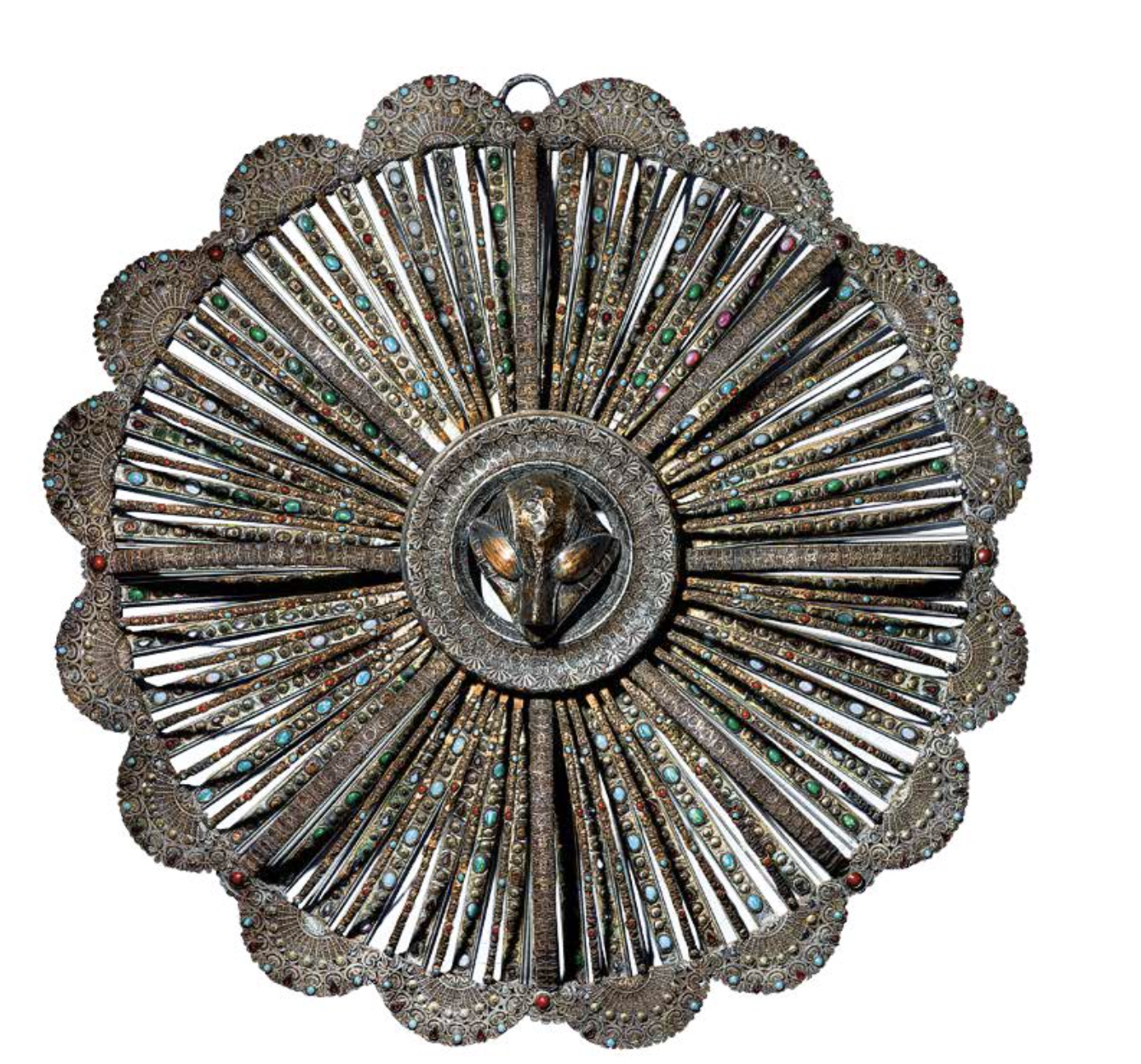Simon Shiroka

Simon Shiroka's Rosette connects tradition and innovation through the use of filigree, a traditional art form that involves twisting and soldering thin metal threads into intricate patterns. This rosette, which in Albanian history acts as a motif of wealth, includes what looks like a Balkan, Neolithic figurine with outstretched arms, and in the context of this exhibition, evokes the roundedness of the tepsija platter, which appears in Semâ Bekirovic’s work presented in the same room.
Philosopher Shkëlzen Maliqi compared the piece to a cosmos of harmony and celestial forms: “The plenitude of gems and silver flourishing in the Rosettes invite us to an open universe of ‘stars’ and mystical nebulae, where imaginary ghosts can float between two perspectives of reality, on the one hand that of a rational view where one finds soothing order and symmetry, and on the other hand, a view of dense networks of figures and shifting forms with micro-ornaments that look like a labyrinth of which there is no way out.”